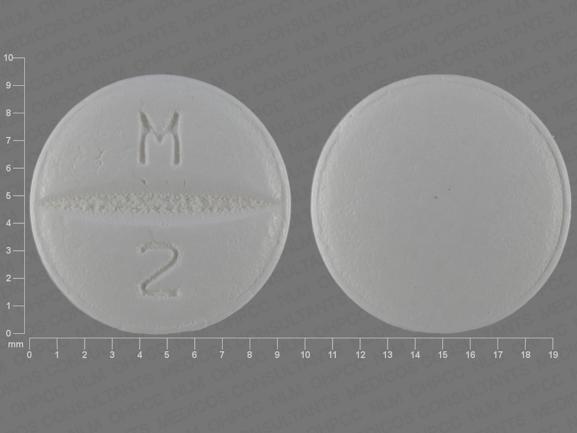Metoprolol Side Effects
Medically reviewed by Drugs.com. Last updated on Jan 8, 2025.
For healthcare professionals
Applies to metoprolol: compounding powder, injectable solution, oral capsule extended release, oral solution, oral tablet, oral tablet extended release.
General adverse events
The most common adverse reactions were tiredness, dizziness, depression, shortness of breath, bradycardia, hypotension, diarrhea, pruritus, and rash.[Ref]
Cardiovascular
- Very common (10% or more): Heart failure (up to 27.5%), hypotension (systolic blood pressure less than 90 mmHg) (up to 27.4%), bradycardia (heart rate less than 40 beats per minute) (up to 15.9%),
- Common (1% to 10%): Cold extremities, arterial insufficiency, palpitation, first degree heart block (P-R interval 0.26 seconds or greater), second or third degree heart block, postural disorders
- Uncommon (0.1% to 1%): Cardiogenic shock in patients with acute myocardial infarction
- Rare (0.01% to 0.1%): Disturbances of cardiac conduction, cardiac arrhythmia
- Very rare (less than 0.01%): Intermittent claudication increased
- Frequency not reported: Claudication[Ref]
Gastrointestinal
- Common (1% to 10%): Diarrhea, nausea, dry mouth, gastric pain, constipation, flatulence, heartburn, abdominal pain, vomiting
- Frequency not reported: Retroperitoneal fibrosis[Ref]
Other
- Common (1% to 10%): Tiredness, peripheral edema, accident and/or injury, death, fatigue
- Uncommon (0.1% to 1%): Edema, precordial pain
- Frequency not reported: Lactic dehydrogenase elevated
- Postmarketing reports: Chest pain[Ref]
Nervous system
- Common (1% to 10%): Dizziness, vertigo, stroke, headache
- Uncommon (0.1% to 1%): Paresthesia, somnolence, impaired concentration
- Rare (0.01% to 0.1%): Alertness decreased
- Very rare (less than 0.01%): Amnesia/memory impairment, tinnitus, taste disturbance
- Frequency not reported: Short-term memory loss
- Postmarketing reports: Syncope[Ref]
Respiratory
- Common (1% to 10%): Shortness of breath, wheezing, dyspnea
- Rare (less than 0.1%): Rhinitis[Ref]
Dermatologic
- Common (1% to 10%): Pruritus, rash
- Uncommon (0.1% to 1%): Sweating increased
- Rare (0.01% to 0.1%): Loss of hair
- Very rare (less than 0.01%): Photosensitivity reactions, psoriasis aggravated, gangrene in patients with preexisting severe peripheral circulatory disorders, hyperhidrosis, alopecia[Ref]
Psychiatric
- Common (1% to 10%): Depression
- Uncommon (0.1% to 1%): Insomnia, nightmare
- Rare (0.01% to 0.1%): Nervousness, anxiety
- Very rare (less than 0.01%): Confusion, hallucination, personality disorder, disturbances of libido
- Frequency not reported: Sleep disturbance[Ref]
Musculoskeletal
- Uncommon (0.1% to 1%): Muscle cramps
- Very rare (less than 0.01%): Arthralgia, arthritis
- Frequency not reported: Musculoskeletal pain[Ref]
Metabolic
- Uncommon (0.1% to 1%): Weight gain
- Frequency not reported: Unstable diabetes
- Postmarketing reports: Blood triglycerides increased, high density lipoprotein (HDL) decreased[Ref]
Ocular
- Rare (less than 0.1%): Visual disturbance, dry and/or irritated eyes, conjunctivitis
- Frequency not reported: Blurred vision[Ref]
Hepatic
- Rare (0.01% to 0.1%): Liver function test abnormalities
- Very rare (less than 0.01%): Hepatitis
- Frequency not reported: Transaminase elevated, alkaline phosphatase elevated
- Postmarketing reports: Jaundice, non-specific hepatic dysfunction[Ref]
Genitourinary
- Rare (0.01% to 0.1%): Impotence/sexual dysfunction
- Very rare (less than 0.01%): Peyronie's disease[Ref]
Immunologic
- Rare (less than 0.1%): Positive antinuclear antibodies[Ref]
Hematologic
- Very rare (less than 0.01%): Thrombocytopenia
- Frequency not reported: Agranulocytosis[Ref]
See also:
References
1. (2001) "Product Information. Lopressor (metoprolol)." Novartis Pharmaceuticals
2. Cerner Multum, Inc. "UK Summary of Product Characteristics."
3. Cerner Multum, Inc. "Australian Product Information."
Frequently asked questions
- What is the best time of day to take blood pressure medication?
- Does metoprolol lower resting heart rate?
- Metoprolol Succinate vs Tartrate: What's the difference between them?
- Does metoprolol make you sleepy?
- Does metoprolol cause hair loss?
- What medications are known to cause hair loss?
- How long does Metoprolol stay in your system after you stop taking it?
- How long does it take for metoprolol to work?
- Which is safer: metoprolol succinate or tartrate?
More about metoprolol
- Check interactions
- Compare alternatives
- Reviews (656)
- Drug images
- Dosage information
- Patient tips
- During pregnancy
- Support group
- Drug class: cardioselective beta blockers
- Breastfeeding
- En español
Patient resources
Other brands
Professional resources
- Metoprolol monograph
- Metoprolol (FDA)
- Metoprolol Succinate (FDA)
- Metoprolol Succinate ER Capsules (FDA)
- Metoprolol Succinate ER Tablets (FDA)
Other brands
Lopressor, Toprol-XL, Kapspargo Sprinkle
Related treatment guides
Further information
Metoprolol side effects can vary depending on the individual. Always consult your healthcare provider to ensure the information displayed on this page applies to your personal circumstances.
Note: Medication side effects may be underreported. If you are experiencing side effects that are not listed, submit a report to the FDA by following this guide.

